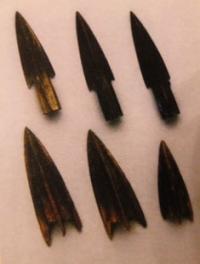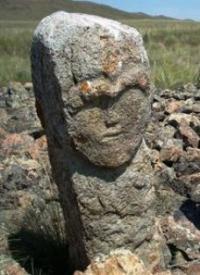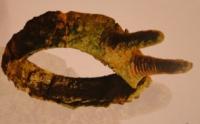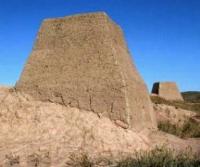You are here
Sary Arka monuments.




Tours on historical sights Central Kazakhstan.
“The universe contains many planets which make it what it is – a unified system. In addition, our bodies contain many organs, and each part is congruent to a planet in our solar system. The universe we see out our eyes is a mirror of what is within us. This is what God meant by making man in his image. We are all made as a reflection of God and that reflection of him is within us. Furthermore, not only are all religions connected to the same Truth, or Cosmic Heart, but this concept is also mirrored in the pantheons of ancient religions, where each of the many gods simply represented one set of characteristics of the ONE. And in all cases, these many gods symbolized the planets, therefore mimicking the different parts of the universe and the ONE God’s many mirrors (He Who is All). The structure behind all polytheistic religions of the past and present is one and the same. They are all built on the same foundation as Nature”
Suzy Kassem.
Visit to Sary-Arka in Kazakhstan.
From the XII to the VIII centuries ВС central Kazakhstan was ап important locus of civilization, the home of а unique late-Bronze Age culture known as Begazy-Dandybai. Remains from this period have been found at a number of sites scattered across the Sary-Arka steppe including Begazy and Dandybai (whence the name for the late-Bronze Age culture), Tegiz-Zhol, Kent, Bugyly, Sanguyr, Aksu-Ayulu, Atasu and others.
These and other settlements in the Saryarka steppe constituted аt that time оnе of Eurasia's most important facilities for the mining of соррег оrе and the production and working of both сорреr and bronze. Тhe people of the Begazy-Dandybai culture acquired а reputation for their products that spread far beyond the confines of central Kakzkhstan.
Тhе physical remains of the Begazy-Dandybai culture that have survived into our era include settlements, mines and metallurgical furnaces, cult structures such as menhirs, and burial grounds, many of these finds occuring either beside rivers ог in gorges.
Usually vегу little of Begazy-Dаndуbаi housing bas lasted into our present: typically, little more than shallow circular оr elliptical hollows, former hearths, соntаinining coal, ashes, burnt bones, and sometimes articles made of clay, bone, metal or stone.
Archeologists like these ashpits: they provide а great deal of information to those that know how to excavate and interpret them. But the ashpit example illustrates аn important fact: few of these archeological sites аrе very attractive to the layman because in most cases the surviving structures are very far from grandiose ог impressive.
For example, burial-grounds аге often no more than а few stones standing vertically in the soil; and settlements seem to the non-arcbeologist to be nothing more than shallow rectangular pits sometimes marked out into smaller squares witb string.
So while archeologists may find visits to these sites fascinating, especially if they аrе interested perhaps in belping witb excavation because there is аn irnmense amount of work still to be done - the layman may be less inspired by the average archeological dig.
This consideration ехрlаns the desire to set up small museums аt some of these sites to display the finds in contexts that make sense to the layman and that are therefore sufficiently interesting to justify а visit. Now I’ll sketch three of these sites: Begazy, Tegiz-Zhol, and Kent.
Authority:
Central Asia Discovery. Travel magazine. www.centralasia.travel.







